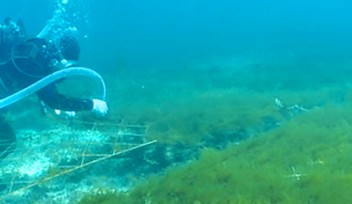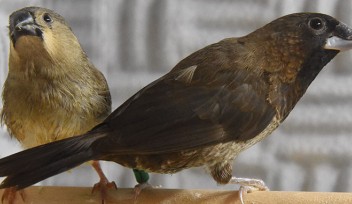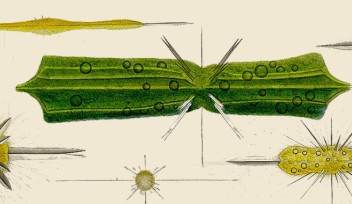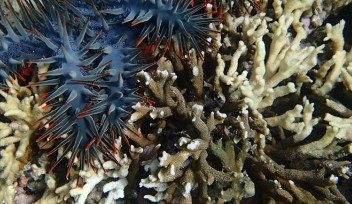Dr. Satoshi Mitarai's op-ed carried in Ryukyu Shimpo
The February 2, 2011 edition of the Ryukyu Shimpo featured an op-ed by Dr. Satoshi Mitarai, Independent New Investigator of the Marine Biophysics Unit, about the outcome of the Computational Ecology Workshop at OIST in December 2010.
Okinawan Sea Rich in Potential
-- OIST aims to create world-class research center --
Okinawa is one of the regions with the richest marine environment on this planet. The beautiful sea has cultivated a unique culture and attracted many tourists. Now the sea surrounding Okinawa is attracting attention of scientists around the world.
Last month, Okinawa Institute of Science and Technology (OIST) hosted an international workshop on marine environmental research as one of the Institutes’ activities toward the opening of the Graduate University. In this article, I would like to introduce the attractiveness of the sea of Okinawa as a research interest as well as report the outcomes of the event.
The primary feature of the sea is in its rich coral reef that is one of the largest in the world. It is a treasure-trove of life that provides affluent research themes. In addition, influence by the climate change can be seen in phenomenon such as coral breaching. Appropriate monitoring and analyzing the marine environment of Okinawa will enable us to make predictions that may lead to improved environmental conservation.
Furthermore, in the surrounding deep sea, there are many hydrothermal vents that spew hot water, where many new microbial species have been found. Such new discoveries are also expected to lead to commercialization including drug-discovery. The sea of Okinawa is one of the most inspiring seas with abundant research themes.
How such advantage should be utilized? In the workshop, reports on the cutting-edge observation of marine environment were made from world’s leading researchers, and opinions were exchanged on future possibilities.
Many comments were made from the participants that having such location for a research institution like OIST located so close to the coral reefs is unique even in the world. It is expected that novel research that will lead the world will be developed by utilizing the geographic advantage together with the collaboration of interdisciplinary research that is promoted at OIST and the generous support that is given to the project. In addition, a plan to conduct a joint research with world’s leading universities in U.S., France and Australia including Stanford University has been launched. On the other hand, future challenges such as development of infrastructures for marine research and further recruitment of researchers were pointed out. It is important that such challenges will be addressed while developing an international network.
Support from the Government is also indispensable for these researches. In the budget proposal for the next fiscal year, the promotion of “Okinawa Marine Eco-system Research Project” of OIST is included. It is expected that further installation of advanced equipment will increase global attention.
In addition, outstanding researches on marine organisms have been conducted by local institutions including the University of the Ryukyus, Ocean Exposition Commemorative Park Management Foundation. Through further collaboration with such institutions, we would like to achieve synergetic effects.
Okinawa has an enormous potential to become an international research center in marine environmental research. If excellent researchers come to Okinawa and promote advanced research here, it will lead to the conservation of the rich environment of the sea of Okinawa. We are committed to work toward our goal, and ask for continued support from the people in Okinawa.
Read the op-ed in Japanese (PDF)
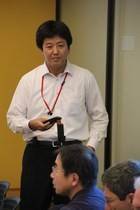
Dr. Mitarai during one of the workshop sessions
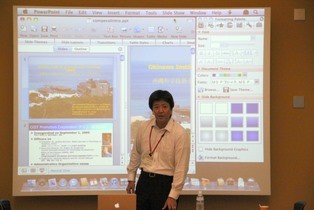
Dr. Mitarai introduces OIST and Okinawa to the participants
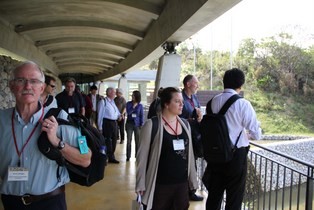
Workshop participants at the entrance to the OIST Center Building
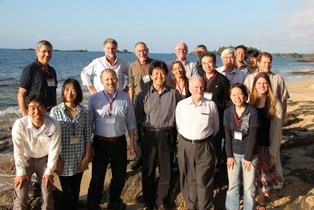
Group photo of the workshop participants
Participants in the 2010 Computational Ecology Workshop at OIST
Robert Warner (University of California, Santa Barbara)
Stephen Monismith (Stanford University)
Amaztia Genin (Hebrew University of Jerusalem)
Louis Legendre (Laboratoire d'Oceanographie de Villefranche)
James Mitchell (Flinders University)
Hidekatsu Yamazaki (Tokyo Institute of Marine Science and Technology)
Paul Barber (University of California, Los Angeles)
Jennifer Caselle (University of California, Santa Barbara)
David Robertson (University of Edinburgh)
Malcolm Atkinson (University of Edinburgh)
Siu-Wai Leung (University of Macau)
Fang-Pang Lin (National Center for High Performance Computing, Taiwan)
Scott Gallager (Woods Hole Oceanographic Institution)
Amber York (Woods Hole Oceanographic Institution)
Specialty
Research Unit
For press enquiries:
Press Inquiry Form










